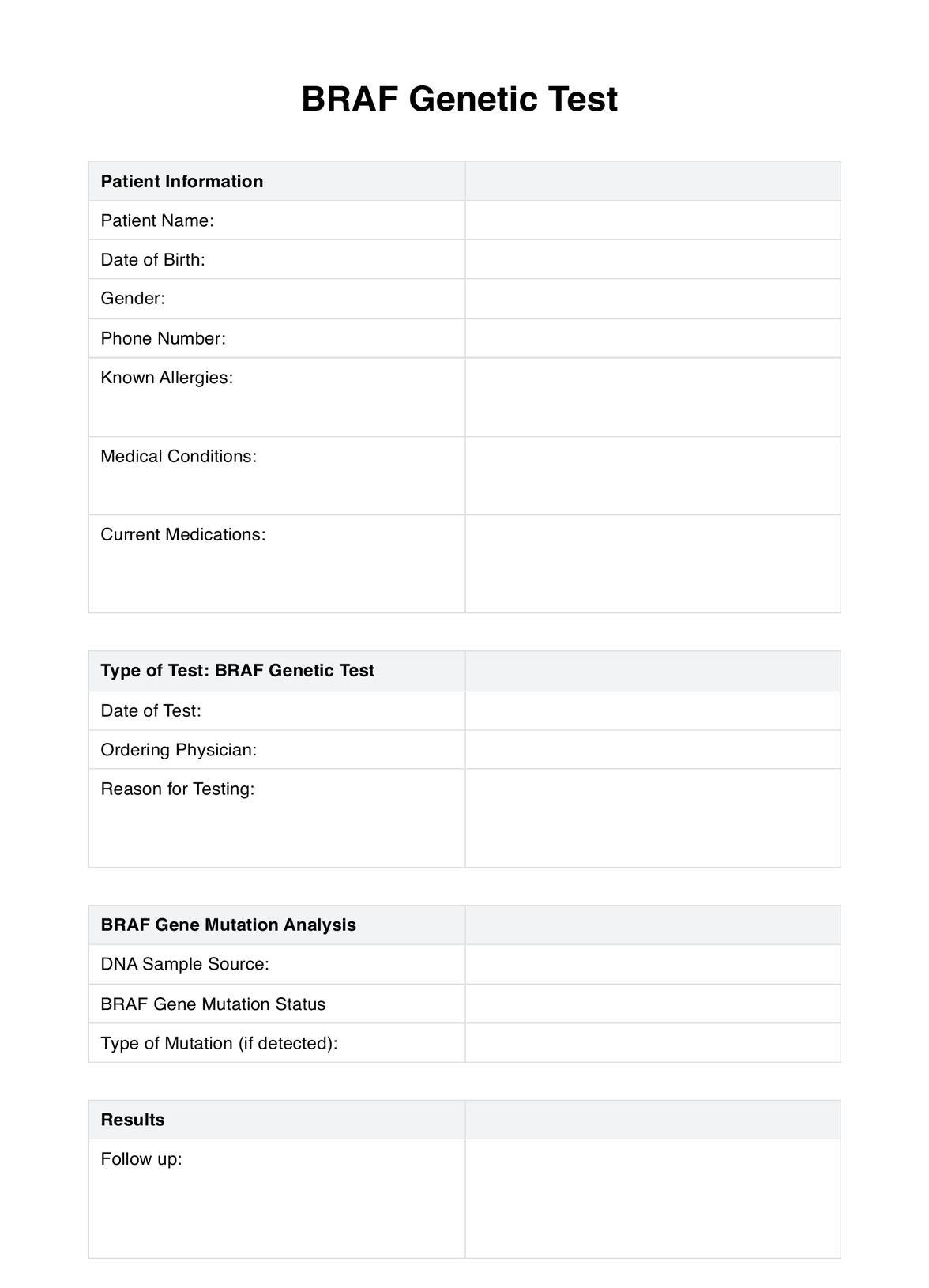Oncologists and dermatologists typically request it for patients with suspected or confirmed cancers, such as melanoma or thyroid cancer, where BRAF gene mutations are common.

BRAF Genetic
Learn how the BRAF Genetic Test can detect mutations that may lead to cancer or other conditions, guiding precise treatment decisions.
Use Template
BRAF Genetic Template
Commonly asked questions
These are used when healthcare providers need to identify BRAF gene mutations in patients to guide treatment decisions, especially in cancer cases, where specific mutations influence treatment options.
The tests are conducted by analyzing DNA samples, often from tumor tissue, to detect mutations in the BRAF gene. These mutations are then interpreted to guide treatment strategies.
EHR and practice management software
Get started for free
*No credit card required
Free
$0/usd
Unlimited clients
Telehealth
1GB of storage
Client portal text
Automated billing and online payments











